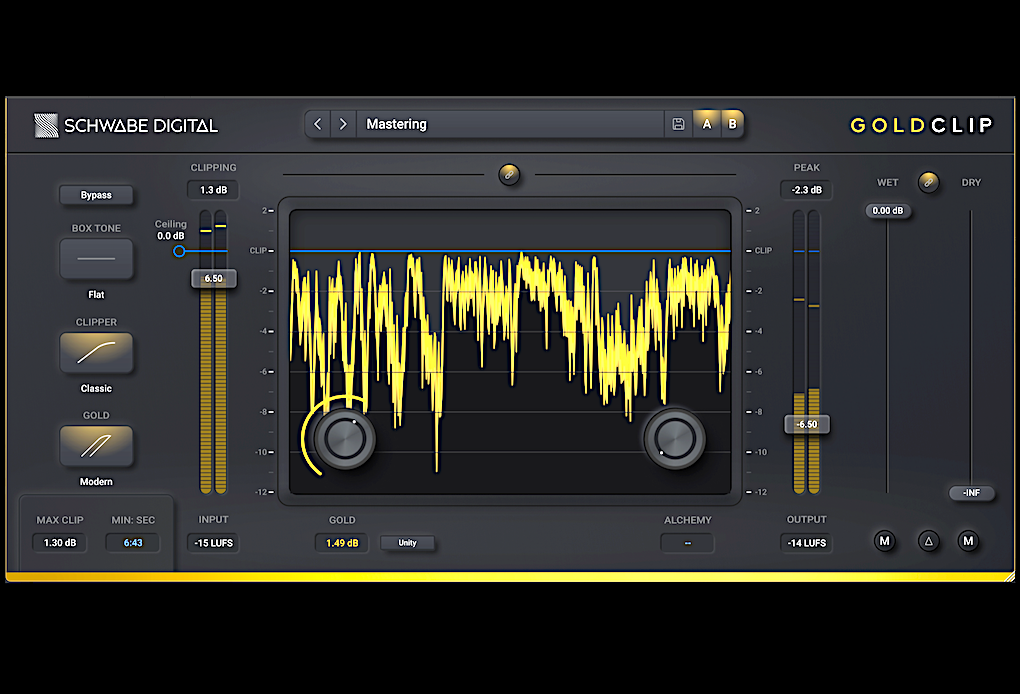- in Production by Bobby Owsinski
New Music Gear Monday: Schwabe Digital Gold Clip Mastering Processor Plugin
Many plugins come to life because an engineer wants to emulate the sound of an analog processor that can’t yet be duplicated in the digital domain. The latest of these is the new Gold Clip mastering processor plugin from Schwabe Digital that features the pleasant overload saturation of some favorite digital convertors, and then adds even more features.

The brainchild of mastering engineer Ryan Schwabe (you can hear him talk about Gold Clip on my Inner Circle Podcast 475), Gold Clip is a clipper, loudness saturator, mid- and high-frequency peak contour processor, distortion device, box tone generator, clip clock and true parallel mixer, and can be used as a mastering processor or a creative tool for production.
Unique Functions
There are three main functions to Gold Clip: Clipper, Gold, and Alchemy. The clipping behavior carefully emulates the overloading effects of two famous mastering converters. There are three settings for the clipper: Modern, Classic and Hard, which can be described as soft, medium, and hard knee. Modern and Classic are tuned to match the character and dynamic response of their hardware counterparts. Hard is a custom clipper that maintains the integrity of the signal up until the clip point.
The Gold parameter is fundamentally different than a compressor because it does not rely on attack and release times to perform compression. Instead it performs a sample-by-sample analysis of the clipped signal and compresses the audio, while the peaks and transients remain largely untouched. As a result, Gold compresses the audio but without the artifacts that can be inflicted by the attack and release on classical compressors. It’s adjusted by a large GOLD control on the bottom left of the waveform display, and can be set to either Modern or Classic mode, where each emulates the soft saturation of a famous mastering convertor.
Alchemy reduces the harmonic effects of clipping by contouring the mid and high frequencies down by as much as 1dB after the signal is clipped. High frequencies are reduced as the signal approaches the clip point, softening the harmonics that can occur when clipping. The sonic effect is very much like the high-frequency saturation from tape but does not affect any other part of the signal. It’s adjusted by a large control on the bottom right of the waveform display.
But There’s More
Speaking of display, the large waveform display window in the center of the plugin shows Clipping, Plugin Output and Gold Processing. Besides the obligatory Input and Output controls, there’s a Clipping indicator above the Input, and a input level indicator in LUFS below it. On the Output control, a Peak indicator is on top, which the output LUFS appears on the bottom.
Of course it wouldn’t be a proper digital limiter without a Ceiling control on the input, and parallel processing is achieved by the individual WET and DRY level controls on the far right.
Gold Clip has a lot more to offer than mentioned above so it’s truly worth checking out. It’s available for Mac and PC in all the popular plugin formats. There’s a full 14 day trial period, and the purchase price is at an introductory $199 (normally $249). You can also Rent-To-Own for $20 per month for 10 months.
You can find out more here.

